We all have played with magnets at some point in our childhood. Magnets have applications in many devices we use that we hardly notice them. A small introduction to magnets here.
What is a magnet?
A magnet attracts certain metals and has an invisible field around it, known as the magnetic field. It has two poles: the North pole and the South pole. Magnets come in various shapes, with the most common being the horseshoe magnet and the bar magnet.
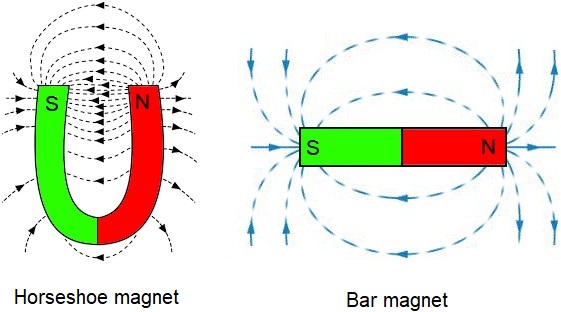
Poles: Every magnet has two poles: the north pole (N) and the south pole (S). A freely suspended magnet aligns with the Earth’s north-south direction, which is why these poles are named accordingly.
Magnetic field: It is a region in space surrounding a magnet where the magnet has an influence. If an iron piece comes within this field, it gets attracted.
Magnetic field lines: They are imaginary lines that emerge out of the north pole and enter the magnet through the south pole. Field lines exist within the magnet also.
- Place a magnet under a stiff cardboard.
- Sprinkle iron filings on the cardboard and tap the board.
- The iron filings align themselves along the magnetic field lines.
- We can see that the lines appear to come out or enter the poles, and directed from one pole to the other.
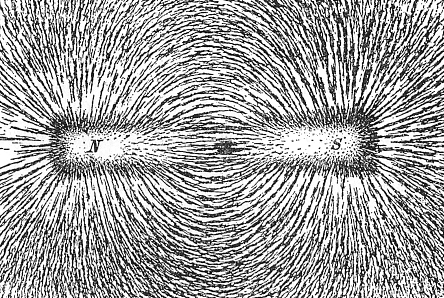
Properties of magnets
- Magnets attract certain metals like iron, nickel, cobalt. This is called attractive property. A magnet picking up steel pins, iron filings and nails, or sticking to a fridge door are because of this property.
- Similar or like poles repel each other. It means that the N-pole of one magnet pushes away the N-pole of another magnet. Similarly, the S-pole of a magnet pushes away the S-pole of another.
- Dissimilar or unlike poles attract each other. It means that the N-pole of one magnet attracts the S-pole of another magnet.
- A freely suspended magnet always aligns itself in the direction of the earth’s poles. This is called the directive property of a magnet.
- Magnetic poles always exist in pairs, called magnetic dipoles. No magnet can have only one pole. If a magnet is broken, each piece will have its own N-pole and S-pole. It is called pair property.
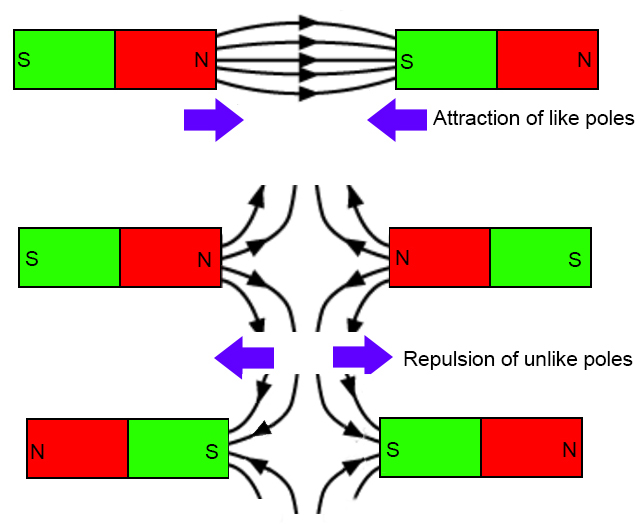
Natural magnets - Do they exist?
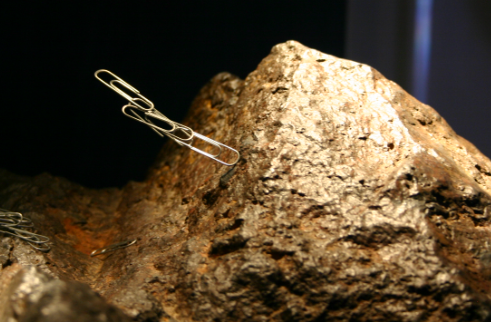
Yes, definitely! Without magnets, humans wouldn’t have discovered the ability to attract iron. In ancient Magnesia, shepherds noticed that certain rocks pulled their iron-tipped staffs and made walking difficult due to their iron-nailed footwear. These naturally magnetic rocks amazed people, as they not only attracted iron but also aligned in the north-south direction when suspended. Known as lodestones, these stones became essential for navigation, helping travelers and sailors find directions.
A natural magnet or lodestone is made of iron oxide, Fe3O4.
The earth as a magnet
We have seen above that a magnet aligns itself in the north-south direction when suspended freely. But why does it do so?
A freely suspended magnet always aligns in the north-south direction because the Earth itself acts as a giant magnet with a magnetic field covering the entire globe. The north pole (N) of a magnet is attracted to the Earth’s magnetic south pole, which lies near the geographic North Pole.
One theory suggests that the Earth’s molten iron core rotates around a solid iron core, generating an electric current that creates a magnetic field.
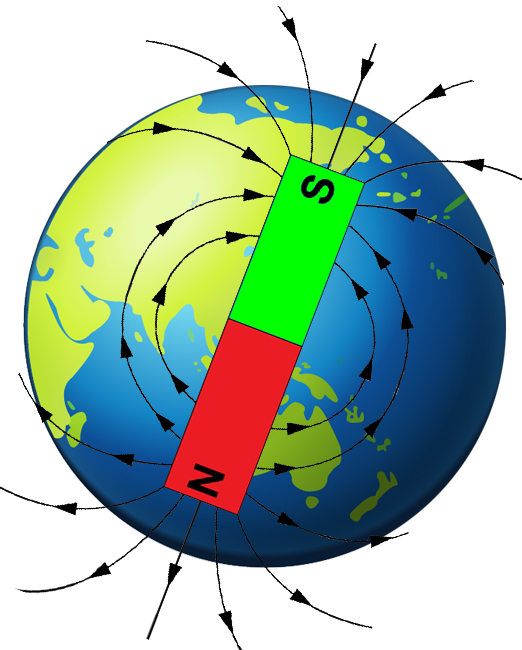
How is the earth's magnetic field useful?
- Since the magnet’s pole is near the geographical pole, it is easier to find the directions using a magnetic compass.
- Migratory birds are said to use the geomagnetic field to find their direction while journeying thousands of kilometers across oceans and vast stretches of land. The same holds good for migratory fish that travel thousands of kilometers in the ocean.
- One of the most important use is that life is possible only because of this field. The magnetic field diverts dangerous radiation that bombards out from the sun, and protects life on earth.
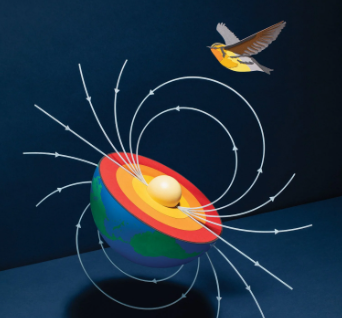
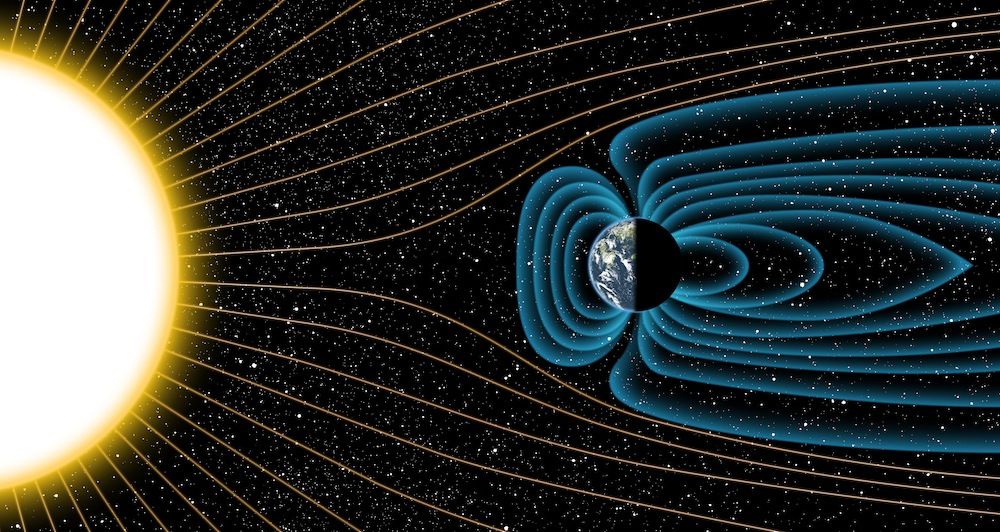
Read about artificial magnets in this article.


Pingback: Jake Vernon
Articles are flooding the internet. But to write in clear, simple lines is an art, and you have it. Only complaint is, your articles are less in number in this site. Keep writing more regularly.
Easy reading
Loving the information on this internet site, you have done outstanding job on the content.
Wow, amazing blog layout! How long have you been blogging for? you made blogging look easy. The overall look of your website is fantastic, as well as the content!
Pingback: Shyam